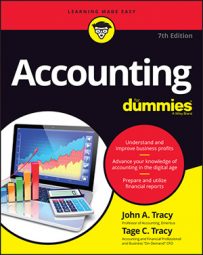To borrow lyrics from an old Bing Crosby song, external financial statements are designed to “accentuate the positive, eliminate the negative … [and] don’t mess with Mister In-Between.”
Seeking out problems and opportunities
Business managers need more accounting information than what’s disclosed in external financial statements for two basic purposes:- To alert them to problems that exist or may be emerging that threaten the profit performance, cash flow, and financial condition of the business
- To suggest opportunities for improving the financial performance and health of the business
Avoiding information overload
Business managers are very busy people. Nothing is more frustrating than getting reams of information that you have no use for. For that reason, the controller should guard carefully against information overload. While some types of accounting information should stream to business managers on a regular basis, other types should be provided only as needed.Ideally, the controller reads the mind of every manager and provides exactly the accounting information that each manager needs. In practice, that can’t always happen, of course. A manager may not be certain about which information she needs and which she doesn’t. The flow of information has to be worked out over time.
Furthermore, how to communicate the information is open to debate and individual preferences. Some of the additional management information can be put in the main body of an accounting report, but most is communicated in supplemental schedules, graphs, and commentary. The information may be delivered to the manager’s computer, or the manager may be given the option to call up selected information from the accounting database of the business.
The point is simply this: Managers and controllers must communicate — early and often — to make sure managers get the information nuggets they need without being swamped with unnecessary data. No one wants to waste precious time compiling reports that are never read. So before a controller begins the process of compiling accounting information for managers’ eyes only, be sure there’s ample communication about what each manager needs.

